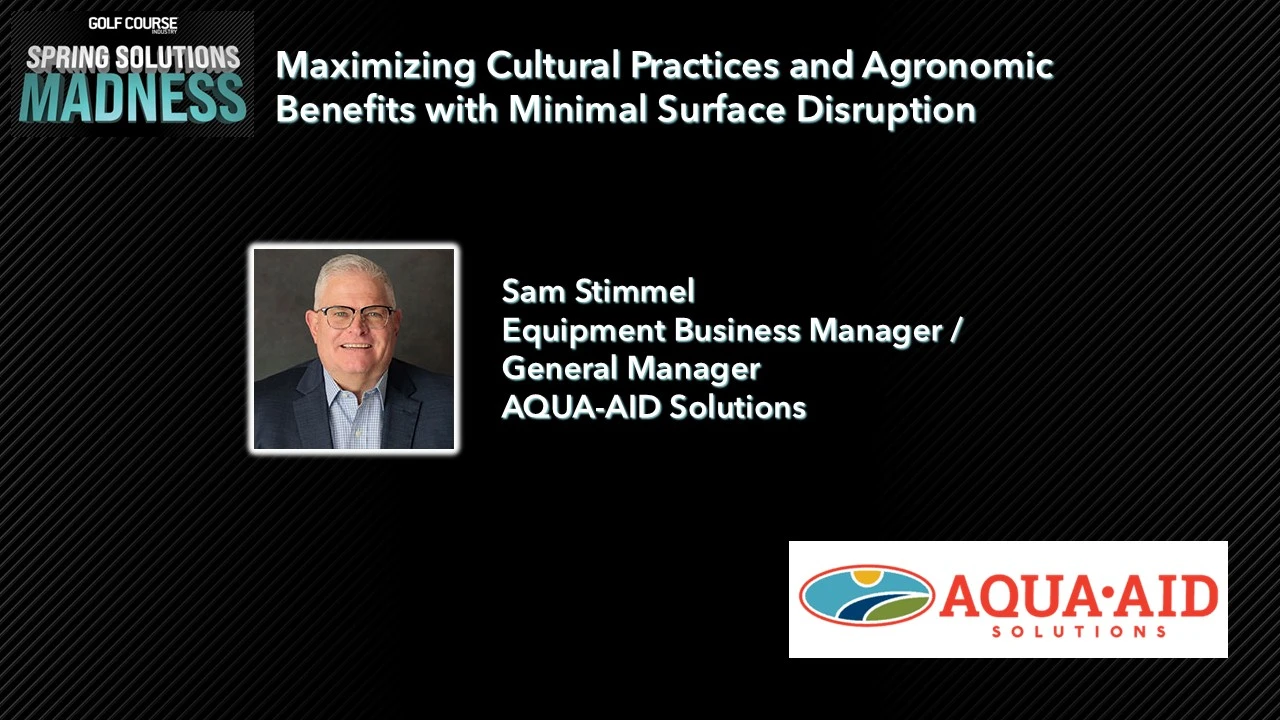Association news
Issues discussed at GCBAA meeting
Milwaukee – Several topics were discussed at the Golf Course Builders Association of America’s annual summer meeting. They were: how builders can improve the process of getting paid on time; how builders can protect their workers and prevent being fined by the Occupational Safety and Health Administration; an update about the United States Golf Association’s research of greens that included subsurface drip irrigation and alternative materials for drainage layers; advances in equipment technology that explain why golfers are hitting the ball farther; the PGA’s program, Play Golf America, that encourages more people to play golf; how to create a wetlands area on golf courses to solve storm water problems; and ideas about how to reduce the cost of building a golf course.
Members suggested they remain diligent and timely in keeping track of and submitting invoices, perform due diligence on owners and not sue owners when not getting paid on time.
As for building less expensive golf courses, architects suggested choosing sites that don’t need a lot of earth moved and to look at all line items to see where money can be saved.
Audubon program adds golf courses
Selkirk, N.Y. – The Audubon Cooperative Sanctuary program added more facilities, bringing the number to 2,287. Also, 490 golf courses have been certified as Audubon Cooperative Sanctuaries.
The program is working with 118 active members representing 50,000 acres in 33 states, as well as in Canada, China, Portugal, Puerto Rico and South Africa. The number of Certified Audubon Signature Sanctuaries is 49.
RISE adds members
Washington – Responsible Industry for a Sound Environment recruited 16 new members at the annual meeting of PrimeraTurf, a purchasing cooperative for independently owned companies engaged in the distribution and resale of professional turf, horticulture and landscape products. Representatives from RISE were invited to the Cleveland meeting to educate and recruit new members for the association, which represents the specialty pesticide and fertilizer industries.
To date this year, RISE has recruited 25 new members who receive industry reports and updates and can participate on committees and attend educational workshops, and the annual meeting.
Students awarded golf scholarships
Lawrence, Kan. – Twenty-five college students were awarded scholarships from the Golf Course Superintendents Association of America and The Environmental Institute for Golf. The EIFG awards scholarships annually to students planning careers as golf course superintendents. The awards are based on academic achievement, extracurricular activities, community involvement, leadership and employment. Judging also includes evaluations from the student’s superintendent and faculty adviser and a three-part essay.
The Mendenhall Award of $6,000 is given in memory of Chet Mendenhall, a charter member of the GCSAA. He was a director of GCSAA from 1940-46 and president in 1948. John Kauffman of The University of Arkansas is this year’s Mendenhall recipient.
Legacy Awards announced
Lawrence, Kan. – Twenty high school and college students, all sons, daughters or grandchildren of Golf Course Superintendents Association of America members, have been named 2004 Legacy Award winners.
The awards, funded by Syngenta Professional Products and administered by The Environmental Institute for Golf, are available to GCSAA members’ children and grandchildren who are enrolled full time at an accredited institution of higher learning, or who’ve been accepted at such an institution for the next academic year.
Since the inception of the Legacy Award Program in 1991, 170 winners have been recognized with awards totaling more than $250,000. A committee of six educators and/or college administrators selected the 2004 winners based on academic achievement, extracurricular activities, community involvement, leadership, outside employment and an original essay. This year, 131 applications (74 college and 57 high school) were received, an increase of 27 percent compared with last year. Eight $1,500 scholarships went to graduating high school seniors, and 12 went to students currently enrolled in college.

Explore the October 2004 Issue
Check out more from this issue and find your next story to read.
Latest from Golf Course Industry
- AQUA-AID Solutions bolsters Sunshine State presence
- Escalante Golf acquires secluded Illinois course
- Tartan Talks 105: Nathan Crace and Todd Quitno
- Disease Discussion 24: Let the turf talk to you
- From the publisher’s pen: Foggy intrigue
- USGA releases Water Conservation Playbook
- Vilamoura Golf courses awarded GEO Certified status
- GCSAA’s Health in Action 5K/2K reaches fundraising goal





